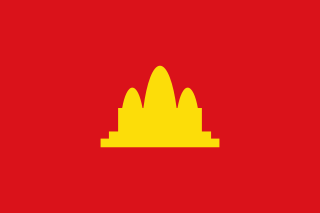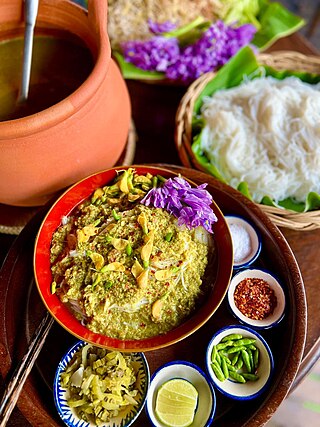This article lists the administrators of the French protectorate of Cambodia , and also encompass the Japanese occupation of Cambodia.
(Dates in italics indicate de facto continuation of office)
| Tenure | Portrait | Incumbent | Notes |
|---|---|---|---|
| French suzerainty | |||
| April 1863 to July 1866 |  | Ernest Marc Louis de Gonzague Doudart de Lagrée , Representative | |
| July 1866 to 20 February 1868 | Armand Pottier , Representative | 1st time | |
| 20 February 1868 to 10 March 1870 | Jean Moura , Representative | 1st time | |
| 10 March 1870 to 11 November 1870 | Armand Pottier , Acting Representative | 2nd time | |
| 11 November 1870 to 1 January 1871 | Jules Marcel Brossard de Corbigny , Acting Representative | ||
| 1 January 1871 to 1 May 1876 | Jean Moura , Representative | 2nd time | |
| 1 May 1876 to 9 November 1876 | Paul-Louis-Félix Philastre , Acting Representative | ||
| 9 November 1876 to 6 January 1879 | Jean Moura , Representative | 3rd time | |
| 6 January 1879 to 10 May 1881 |  | Étienne François Aymonier , Acting Representative | |
| 10 May 1881 to 1 November 1884 | Paul Julien Auguste Fourès , Representative | ||
| 1 November 1884 to 12 August 1885 | Paul Julien Auguste Fourès , Acting Resident-General | ||
| 12 August 1885 to 16 October 1885 | Jules Victor Renauld , Acting Resident-General | ||
| 16 October 1885 to 17 May 1886 | Pierre de Badens , Provisional Resident-General | ||
| 17 May 1886 to 28 October 1887 | Georges Jules Piquet , Resident-General | ||
| 4 November 1887 to 10 May 1889 | Louis Eugène Palasne de Champeaux , Acting Resident-General | ||
| 10 May 1889 to 4 July 1889 | Pascal Orsini , Acting Resident-General | ||
| 4 July 1889 to 24 January 1894 | Albert Louis Huyn de Vernéville , Resident-Superior | 1st time | |
| 24 January 1894 to 4 August 1894 | Flore Léonce Marquant , Acting Resident-Superior | ||
| 4 August 1894 to 14 May 1897 | Albert Louis Huyn de Vernéville , Resident-Superior | 2nd time | |
| 14 May 1897 to 16 January 1900 | Antoine Étienne Alexandre Ducos , Resident-Superior | ||
| 16 January 1900 to 3 June 1901 | Louis Paul Luce , Acting Resident-Superior | 1st time | |
| 3 June 1901 to 17 July 1902 | Léon Jules Paul Boulloche , Resident-Superior | ||
| 17 July 1902 to 26 October 1902 | Charles Pierre Pallier , Acting Resident-Superior | ||
| 26 October 1902 to 25 September 1904 | Henri Félix de Lamothe , Resident-Superior | ||
| 25 September 1904 to 16 October 1905 | Louis Jules Morel , Resident-Superior | ||
| 16 October 1905 to 16 December 1905 | Olivier Charles Arthur de Lalande de Calan , Acting Resident-Superior | ||
| 29 December 1905 to 26 July 1911 | Louis Paul Luce , Resident-Superior | 2nd time | |
| 26 July 1911 to 26 March 1914 | Ernest Amédée Antoine Georges Outrey , Resident-Superior | Acting to 8 October 1911 | |
| 26 March 1914 to 25 July 1914 | François Xavier Tessarech , Acting Resident-Superior | ||
| 25 July 1914 to 22 October 1914 | Joseph Maurice Le Gallen , Acting Resident-Superior | ||
| 22 October 1914 to 20 January 1927 | François Marius Baudoin , Resident-Superior | ||
| 15 April 1920 to 6 December 1920 | Georges Maspero , Acting Resident-Superior | Acting for Baudoin | |
| 6 December 1920 to 21 February 1921 | Hector Clair Joseph Henri Létang , Acting Resident-Superior | Acting for Baudoin | |
| 10 April 1922 to 8 May 1924 | Victor Édouard Marie L'Helgoualc'h , Acting Resident-Superior | Acting for Baudoin | |
| 20 January 1927 to 1 January 1929 | Aristide Eugène Le Fol , Resident-Superior | ||
| 1 January 1929 to 12 January 1929 | Achille Louis Auguste Silvestre , Acting Resident-Superior | 1st time | |
| 12 January 1929 to 4 March 1932 | Fernand Marie Joseph Antoine Lavit , Resident-Superior | ||
| 4 March 1932 to 15 January 1935 | Achille Louis Auguste Silvestre , Resident-Superior | 2nd time, acting to 7 December 1932 | |
| 15 January 1935 to 12 December 1936 | Henri Louis Marie Richomme , Acting Resident-Superior | ||
| 12 December 1936 to 29 December 1941 | Léon Emmanuel Thibaudeau , Resident-Superior | Acting to 16 June 1937 | |
| 29 December 1941 to 2 March 1943 | Jean Delens , Acting Resident-Superior | ||
| 2 March 1943 to November 1944 | Georges Armand Léon Gautier , Resident-Superior | ||
| November 1944 to 9 March 1945 | André Joseph Berjoan , Acting Resident-General | 1st time, Japanese prisoner 9 March 1945 – August 1945 | |
| Japanese suzerainty | |||
| 9 March 1945 to 1945 | Takanobu Manaki , Commander | ||
| 9 March 1945 to 17 August 1945 | Kanichiro Kubota , Supreme Adviser | ||
| Allied control | |||
| 8 October 1945 to 1946 | Edward Dymoke Murray , Military Commander | From United Kingdom | |
| French suzerainty | |||
| August 1945 to 15 October 1945 | André Joseph Berjoan , Acting Resident-Superior | 2nd time | |
| 15 October 1945 to 10 April 1946 | Paul Huard , Commissioner | ||
| 10 April 1946 to 20 May 1947 | Romain Victor Joseph Pénavaire , Commissioner | Acting to 26 July 1946 | |
| 20 May 1947 to 20 October 1948 | Léon Pignon , Commissioner | ||
| 20 October 1948 to 26 February 1949 | Lucien Vincent Loubet , Acting Commissioner | ||
| 26 February 1949 to 29 October 1951 | Jean Léon François Marie de Raymond , Commissioner | ||
| 29 October 1951 to 16 May 1952 | Yves Jean Digo , Commissioner | ||
| 16 May 1952 to 27 April 1953 | Jean Risterucci , Commissioner | ||
| 27 April 1953 to 9 November 1953 | Jean Risterucci , High Commissioner | ||














